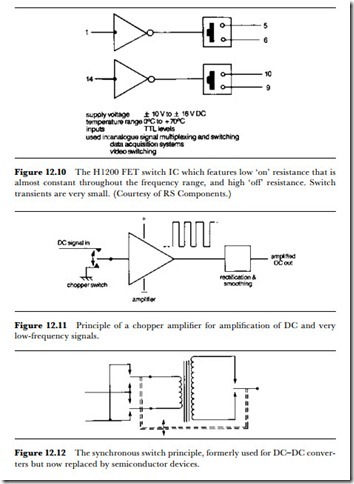Chopper switches
At one time, vibrating mechanical switches were used for DC to AC conversion, particularly for car radios in which their use posed a filtering problem that was never completely overcome. ;\’ith the coming of transistors to permit low-voltage operation of radios, the main applications for the technique of chopping were in DC amplifiers, using the principle illustrated
in Figure 12.11. The input of an amplifier is connected alternately to the small DC signal and to ground, so that the input to the amplifier is a square wave at the frequency of operation of the switch.
The early mechanical vibrating switches were often used synchronously (Figure 12.12) so that no rectification was needed, but more modern chopper amplifiers have used diode bridges as rectifying units. The important point, however, is the type of switching used. Reed switches were a useful intermediate stage, but only the use of modern FET amplifiers permitted the use of reasonably high frequencies for chopper amplifiers. An offshoot of this type of circuit has been the ‘DC-DC’ transformer, which consists of a DC to AC chopper, amplifier and rectifier in one single package. Such circuits are used extensively in digital circuitry where the main supply is +5 V but a few units need a low-current 12 V supply, or some require a negative supply.
